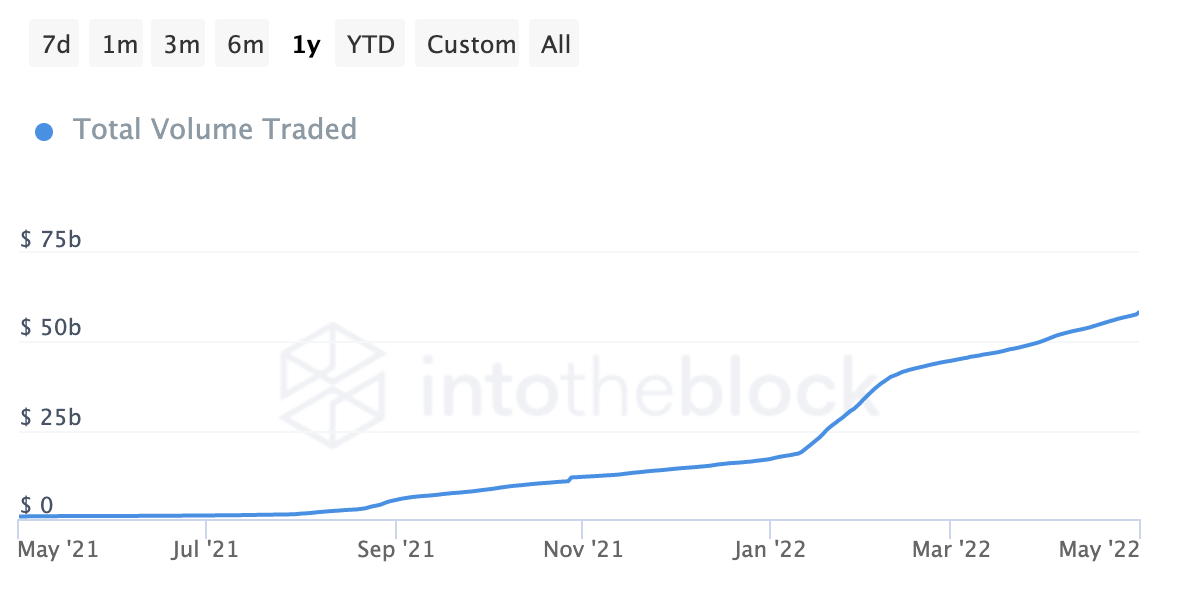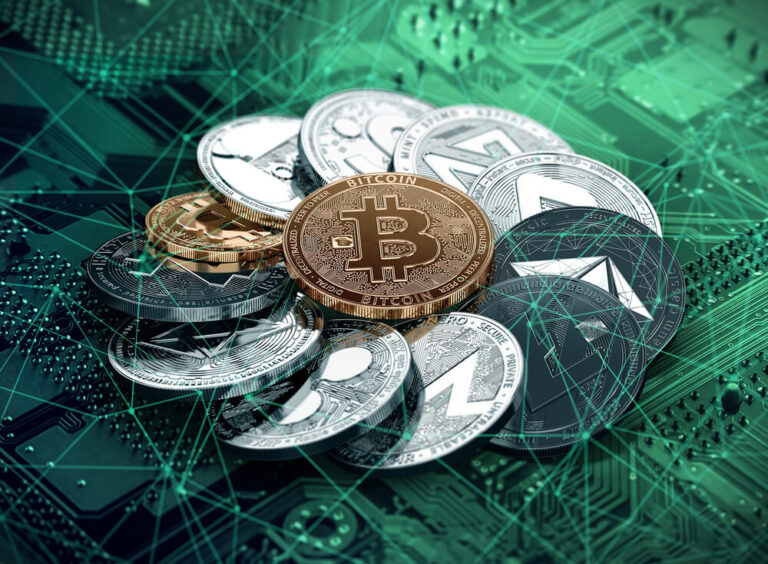A monthly review of what's happening in the crypto markets enriched with institutional research on the most important topics in the industry in cooperation with the Swiss digital asset specialist, 21Shares AG.
The market cap of the overall crypto market is down by 31% since April and dipped to as low as $1.48T. Bitcoin (BTC) and Ethereum (ETH) are down by 23% and 26.7% respectively since last month. April was not a ray of sunshine for the equity market either. The S&P 500 suffered its worst April in 52 years, plunging by 13.3% since the beginning of the year (YTD). In this monthly review, we will delve deeper into the macroeconomic factors driving these drops. We will also shed light on the month’s most significant developments on the regulatory landscape, DeFi, and the wider Metaverse.
Macro and Regulations
US regulators have had a busy month drafting new policies and tweaking existing ones to meet the deadlines stipulated by President Joe Biden's Executive Order. On April 5, Congress introduced a new bill – the Stablecoin TRUST Act. The act involves regulating stablecoins, offering issuers the option of obtaining a state money transmitter license, a traditional bank charter, or a newly created OCC license for stablecoin issuers, which would also access the Federal Reserve's master account system.
Crypto scams often coined “rug pulls” could soon become an outright felony, as New York lawmakers lobby for new legislation that proposes limits on the ability for founding development teams to sell significant percentages of their token holdings within a five-year period. This comes shortly after the rug pull of Frosties, a fraudulent NFT project whose creators were charged last month for looting $1.3M in ETH. This could be a great victory for, not only US investors, but for the entire crypto community.
German banking giant Commerzbank has applied for a crypto custodian license, making it the first major bank to move towards cryptocurrencies in the country. Similarly in the UAE, Kraken was granted the license to operate in the emirates, to become the first cryptocurrency exchange to offer direct funding and trading in UAE dirhams against Bitcoin, Ether, and a range of other virtual assets. Last but not least, Portugal's Central Bank granted Bison Bank the virtual asset service provider (VASP) license, making the bank the first in the country to offer its digital asset services to high net worth individuals.
Emerging Stabelcoins in DeFi
One noteworthy development characterizing the month of April has been the resurgence of algorithmic stablecoins, this time hoping to capitalize on the model that Luna has pioneered with its respective UST currency. This should be expected to create a new incentive for investors’ capital rotation as alternative L1s hoping to attract new users and liquidity will adopt a similar principle to what Terra’s Anchor has offered, evident by Near’s USN mainnet launch complemented with an expected range of 10-20% APY in staking yields through its money market protocol.
Tron’s announcement of launching their own variation called USDD was yet another example showcasing how alternative L1s see this as an opportunity to attract new users and demand for the network as the later is expected to offer 30% APY with the plan to boost the stable’s reserved with $10B worth of crypto collateral a la Terra’s treasury reserve.
The stablecoins vertical was not only eclipsed by the excitement surrounding the news of the new algorithmic currencies and their lucrative APYs, as the firm behind USDC had its fair share of attention. First, it was revealed that Circle closed a funding round of $400M led by the examples of Blackrock, Fidelity management, and others. The fresh round of bankrolling is expected to help the issuer bolster its growth efforts and facilitate reducing its market gap with the leading stablecoin, USDT.
Another part of the deal should see Blackrock become the primary asset manager of USDC’s cash reserves, in addition to examining further use cases for how USDC can be taken advantage of as a streamlined resource within traditional finance. It was also revealed that Circle is considering launching a sterling-backed stablecoin to complement its burgeoning ecosystem, shortly after they’ve announced their plans to expand into the UK.
NFTs, DAOs, and the Metaverse
The NFT market saw 14.5% increase in total volume traded in April, with addresses holding NFTs inching closer to 4M. Moreover, the rise of institutional adoption continues, as Hyundai collaborated with Meta Kongz, an NFT project with more than $20M in traded volume, to release 30 NFTs on OpenSea. In other news, the US talent show American Idol partnered with Theta Labs to release their set of NFT collections. In addition, the infamous video game company Sega reported their aim to include NFT technology into their new supergame initiative.

Unsurprisingly, Meta's consecutive announcements dominated the news cycle of the emerging sector. The company is reportedly considering in-app and social tokens for their closed permissioned metaverse. The disclosure came shortly after Zuckerburg hinted at his plan towards integrating NFTs into Instagram. The news didn’t stop there as they reported their intent on charging 47.5% for NFT sales within its closed immersive world.
Looking at firms improving the accessibility to the proliferating ecosystem, we first saw that Coinbase launched the beta version of their NFT marketplace, allowing only a select few customers to test out the platform. The new Amazon CEO, Andy Jassy, also hinted that the company is mulling over selling NFTs in a bid to eat some of the market share dominated by Opensea and LooksRare. Regarding the former, Opensea finally added support for the long-anticipated, Solana-based NFT collections in its beta mode.
Data & crypto infrastructure
The noteworthy scoop emerging out of the infrastructure layer has been Polygon’s latest addition to its arsenal of scalability solutions, dubbed Supernets. The network’s latest feature, which is designed to complement their vision of enabling an internet of blockchains, will draw influence from Avalanche’s scaling solution. Akin to the AVAX subnets, which aid developers in building application-specific blockchains that emerge in a permissionless and a permissioned flavor, Polygon’s Supernets tackle the same issue by enabling the creation of four different types of customizable networks - sovereign, shared security, rollups and validium supernets.
In other news, Luna’s Foundation Guard has continued their buying spree by accumulating around 11.8k Bitcoin throughout the month of April, as part of their pledge to bolster the protocol’s reserve with $10B of the emerging store of value. The foundation’s top-up was complemented with another $200M purchase worth of the Avalanche token. Even if not immediately apparent, Terra’s decision to strengthen its reserves with BTC might be a catalyst that encourages other native ecosystem stablecoins to follow suit and stack the global reserve asset over a medium time horizon.
On the other hand, Ethereum was dealt a setback as the highly-anticipated Merge to Proof of Stake is now shelved to land roughly around Q3 rather than July - despite the successful shadow fork implementation last week. That said, traders are still withdrawing significant amounts of ETH off centralized exchanges and depositing them into DeFi protocols including Lido Finance, implying conviction that the asset still has more potential for an upside movement.
Expectations for the future
Hawkish policies spearheaded by Jerome Powell could spell another turbulent month for crypto, so it’ll be a development worth closely monitoring. Data released before the next meeting should help clarify how aggressive of a route the FED will take. However, given the heavy adoption of crypto, on the governmental level as well as the corporate, the crypto assets with the highest market caps will persevere. Looking into this vertical, it’ll also be exciting to observe how Terra’s inspiring models will catalyze other L1s to adopt comparable mechanisms to liquidity mining programs that serve to attract heaps of liquidity and new users.
It’ll be compelling to see how sustainable some of these proposals will be starting with Tron’s newest product. It is of paramount significance as the market’s state of affairs that led to UST triumph was dependent on the bullish rally the crypto market was experiencing, and accordingly the high demand for borrowing. Considering the risk-off sentiment that the equities are headed towards, it’ll be curious to see how stablecoin projects will sustain their advertised yields with lessened demand.
Furthermore, we’re also expecting ranking member Patrick Toomey to lobby for his proposed bill, the Stablecoin TRUST Act, before his term ends by 2023. Toomey said he won’t be seeking re-election after his term expires, and will retire from politics altogether. The ranking member, who has been in office for 11 years now, has seven months to champion the innovation of stablecoins and turn this proposal into a law.




